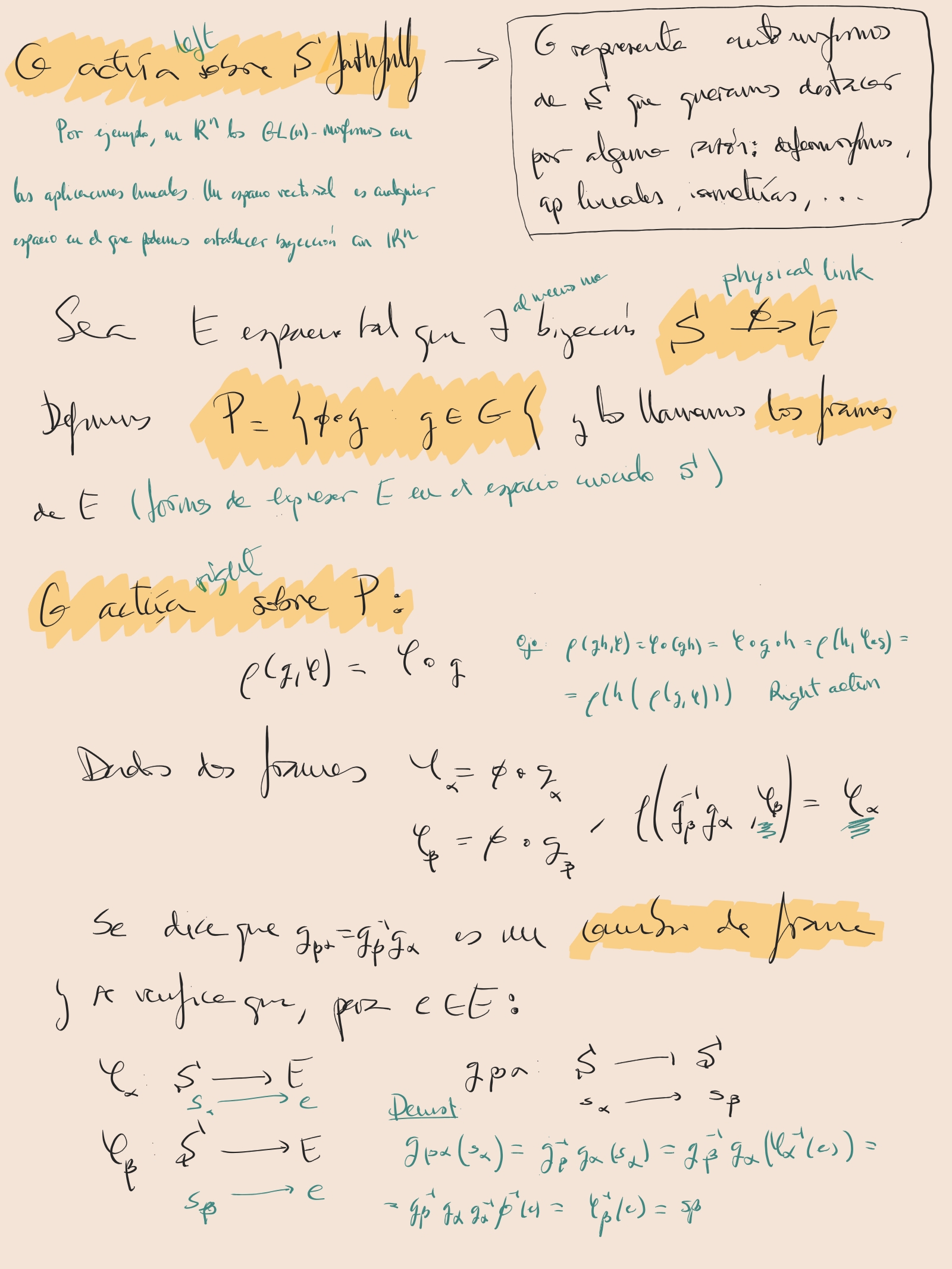Gauge theory
Description
See the key example Time zones example.
Gauge theory is a term that refers to a quite general type of theories in physics which share some key concepts. In this note we are going to name them, relating them with their mathematical counterpart.
In a gauge theory we start with a manifold
with typical fibre
A local (global) section of the associated principal bundle
is called a local (global) gauge, and the choice of such a section is called gauge fixing. As it is said here, it let us to speak of the components of the matter field respect to this gauge fixing. In a sense, fixing a gauge is like specifying a reference frame in
Given any other gauge
such that
In addition, a gauge transformation can also be described (@baez1994gauge page 222) as a transformation
Observe that given a trivialization
and then, any local matter field
can be expressed by
given by the components of
See the note principal bundle for more details.
A principal connection in
We can express
Coming from Classical field theories
We have classical field theories, which are specified by the following data:
- A
-dimensional manifold (space-time) , - A target space
, to construct the space of matter fields . - A Lagrangian, which is a polynomial
, where . - If there is an "external element" affecting the dynamic of the matter field
, this is codified through specific terms in the Lagrangian.
Then, they are generalized to gauge theories, which are the same kind of stuff but:
- Instead of
we use sections of a fiber bundle as matter fields. - Instead of partial derivatives
we use a connection . The connection codify, within itself, the presence of a "external element" affecting the dynamic of the matter field . Different choices of connections lead to different external "forces". - The Lagrangians should now be simpler. For example, the Lagrangian for the combined system of the electromagnetic field and a charged particle field is, in a classical field theory,
If we define a covariant derivative
- The Lagrangians are now invariant by gauge transformations. We know that different
's could define the same EM field, so we had different Lagrangians describing the same system. With the new approach, all these Lagrangians correspond to the same, and the different s correspond to different expressions in a local frame of the same connection. - The external forces depends, indeed, on the curvature of the connection. So several connections with the same curvature yield equivalent Lagrangians.
- Fermions (particles) are related to sections of a complex vector bundle which is associated to a principal bundle over space-time. This complex vector bundle is typically obtained via a representation of the structure group of the principal bundle.
- Bosons (forces) are related to connections on the principal bundle, which determine how the associated vector bundles are parallel transported.
Related: quantum particle, Standard Model.
Examples
- The time zone model. See me paper attempt.
- See the meteor tracking problem at @sharpe2000differential and [xournal 130]
Enfoque Gauge on a point
